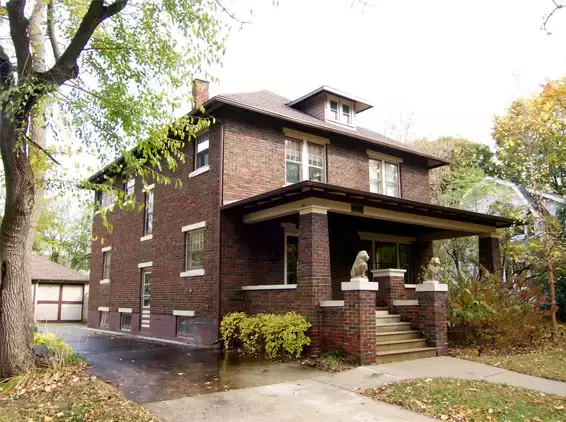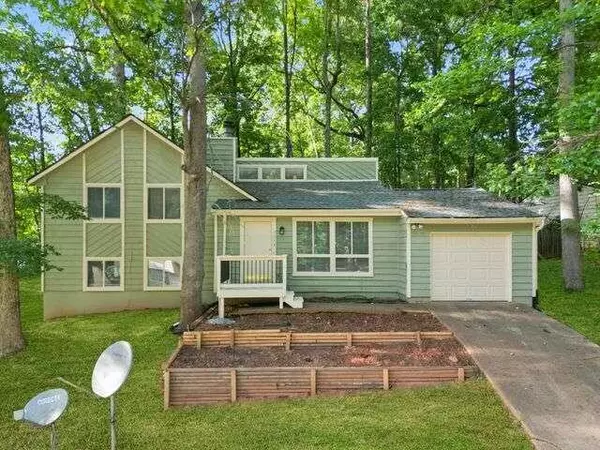
Who's Responsible for Paying a Buyer's Agent
A buyer's agent plays a crucial role in helping prospective homebuyers navigate the often complex and overwhelming process of purchasing a property. Their primary responsibility is to represent the buyer's best interests throughout the entire transaction, ensuring they find the right property at the best possible terms and price. But who exactly is responsible for paying the buyer's agent? In the past the listing Broker was responsible for paying the buyer's agent's commission. When a property is listed for sale, the seller typically agrees to pay a certain percentage of the sale price as a commission to the listing agent. This commission is then split between the listing agent and the buyer's agent, with each receiving a predetermined percentage. Understanding New Rules on Buyer Agent Compensation: What It Means for Homebuyers In recent updates to real estate regulations, there has been a significant shift regarding who pays the buyer agent’s commission. Traditionally, sellers have covered this cost as part of the transaction. However, under the new rules, sellers may now choose whether or not to pay the buyer agent's compensation. Implications for Homebuyers For homebuyers, this change introduces a new dynamic into the homebuying process. Here’s what you need to know: Potential Cost Considerations: Depending on whether the seller opts to pay the buyer agent’s commission or not, you might need to account for this expense as a buyer. It’s essential to clarify with your real estate agent how this will affect your budget and negotiations. Transparency and Communication: With these changes, transparency becomes even more critical. Ensure that your real estate agent communicates clearly about who is responsible for the buyer agent’s commission in each transaction. This clarity helps you make informed decisions. Negotiation Strategy: The flexibility in who pays the buyer agent’s commission could influence negotiation strategies. Buyers might find themselves negotiating different terms based on whether the seller covers this cost or not. Understanding this upfront allows for strategic planning. How We Can Help At A-Z Atlanta Realty, we are dedicated to navigating these changes with you. Whether you are buying your first home or looking to upgrade, our team is here to provide expert guidance and ensure your interests are protected. Comment “Real Estate” below to start a conversation with us and learn more about how these changes impact your home buying journey.

The Three Factors Affecting Home Affordability Today
The Three Factors Affecting Home Affordability Today There’s been a lot of focus on higher mortgage rates and how they’re creating affordability challenges for today’s homebuyers. It’s true that rates climbed dramatically since the record-low we saw during the pandemic. But home affordability is based on more than just mortgage rates – it’s determined by a combination of mortgage rates, home prices, and wages. Considering how each one of these factors is changing gives you the full picture of home affordability today. Here’s the latest. 1. Mortgage Rates While mortgage rates are higher than they were a year ago, they’ve hovered primarily between 6% and 7% for nearly eight months now (see graph below): As the graph shows, mortgage rates have experienced some volatility during that time. And even a small change in mortgage rates impacts your purchasing power. That’s why it’s so important to lean on your team of real estate professionals for expert advice to stay up to date on what’s happening in the market. While it’s hard to project where mortgage rates will go from here, many experts agree they’ll likely continue to remain around 6%-7% in the immediate future. 2. Home Prices Over the past few years, home prices appreciated rapidly as the record-low mortgage rates we saw during the pandemic led to a surge in buyer demand. The heightened buyer demand happened while the supply of homes for sale was at record lows, and that imbalance put upward pressure on home prices. However, today’s higher mortgage rates have slowed down price appreciation. And, the truth is, home price appreciation varies by market. Some areas are seeing slight declines while others have prices that are climbing. As Selma Hepp, Chief Economist at CoreLogic, explains: “The divergence in home price changes across the U.S. reflects a tale of two housing markets. Declines in the West are due to the tech industry slowdown and a severe lack of affordability after decades of undersupply. The consistent gains in the Southeast and South reflect strong job markets, in-migration patterns and relative affordability due to new home construction.” To find out what’s happening with prices in your local market, reach out to a trusted real estate agent. 3. Wages The most positive factor in affordability right now is rising income. The graph below uses data from the Bureau of Labor Statistics (BLS) to show how wages have grown over time: Higher wages improve affordability because they reduce the percentage of your income it takes to pay your mortgage since you don’t have to put as much of your paycheck toward your monthly housing cost. Home affordability comes down to a combination of rates, prices, and wages. If you have questions or want to learn more, reach out to a real estate professional who can explain what’s happening locally and how these factors work together. Bottom Line If you’re planning to buy a home, knowing the key factors that impact affordability is important so you can make an informed decision. To stay up to date on the latest on each, let’s connect today.

Why Today's Foreclosure Numbers Are Nothing Like 2008
Why Today's Foreclosure Numbers Are Nothing Like 2008 You’ve likely seen headlines about the number of foreclosures climbing in today’s housing market. That may leave you with a few questions, especially if you’re thinking about buying a house. Understanding what they really mean is mission-critical if you want to know the truth about what’s happening today. According to a recent report from ATTOM, a property data provider, foreclosure filings are up 6% compared to the previous quarter and 22% since one year ago. As media headlines call attention to this increase, reporting on just the number could actually generate worry and may even make you think twice about buying a home for fear that prices could crash. The reality is, while increasing, the data shows a foreclosure crisis is not where the market is headed. Let’s look at the latest information with context so we can see how this compares to previous years. It Isn’t the Dramatic Increase Headlines Would Have You Believe In recent years, the number of foreclosures has been down to record lows. That’s because, in 2020 and 2021, the forbearance program and other relief options for homeowners helped millions of homeowners stay in their homes, allowing them to get back on their feet during a very challenging period. And with home values rising at the same time, many homeowners who may have found themselves facing foreclosure under other circumstances were able to leverage their equity and sell their houses rather than face foreclosure. Moving forward, equity will continue to be a factor that can help keep people from going into foreclosure. As the government’s moratorium came to an end, there was an expected rise in foreclosures. But just because foreclosures are up doesn’t mean the housing market is in trouble. As Clare Trapasso, Executive News Editor at Realtor.com, says: “There’s no reason to panic, at least not yet. Foreclosure filings began ticking up . . . after the federal foreclosure moratorium ended. The moratorium was enacted in the early days of COVID-19, when millions of Americans lost their jobs, to prevent a tsunami of homeowners losing their properties. So some of these proceedings would have taken place during the pandemic but got delayed due to the moratorium. This is a bit of a catch-up.” Basically, there’s not a sudden flood of foreclosures coming. Instead, some of the increase is due to the delayed activity explained above while more is from economic conditions. As Rob Barber, CEO of ATTOM, explains: “This unfortunate trend can be attributed to a variety of factors, such as rising unemployment rates, foreclosure filings making their way through the pipeline after two years of government intervention, and other ongoing economic challenges. However, with many homeowners still having significant home equity, that may help in keeping increased levels of foreclosure activity at bay.” To further paint the picture of just how different the situation is now compared to the housing crash, take a look at the graph below. It shows foreclosure activity has been lower since the crash by looking at properties with a foreclosure filing going all the way back to 2005. While foreclosures are climbing, it’s clear foreclosure activity now is nothing like it was during the housing crisis. In addition to all of the factors mentioned above, that’s also largely because buyers today are more qualified and less likely to default on their loans. Today, foreclosures are far below the record-high number that was reported when the housing market crashed. Bottom Line Right now, putting the data into context is more important than ever. While the housing market is experiencing an expected rise in foreclosures, it’s nowhere near the crisis levels seen when the housing bubble burst, and that won’t lead to a crash in home prices.
Categories
Recent Posts









![Get Your House Ready To Sell This Winter [INFOGRAPHIC]](https://img.chime.me/image/fs/chimeblog/20231223/16/w600_original_4d8416eb-fecf-4dc4-99cc-4170a4614c02-png.webp)
